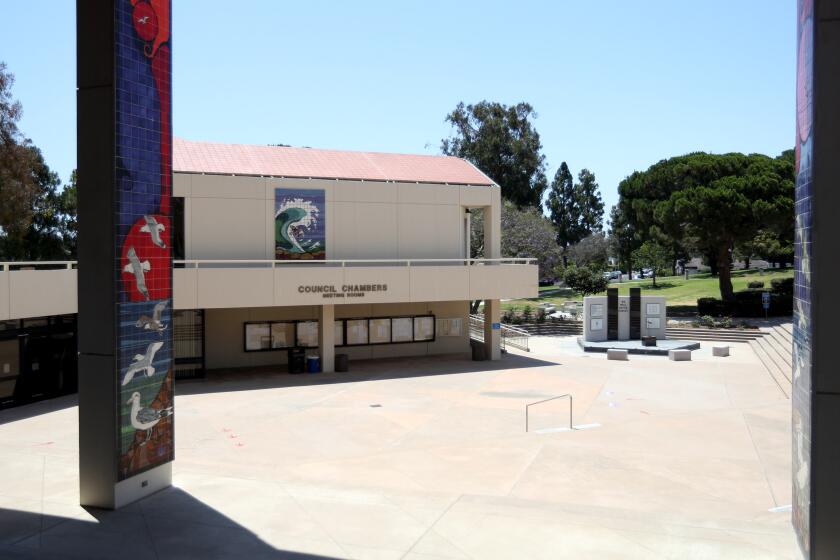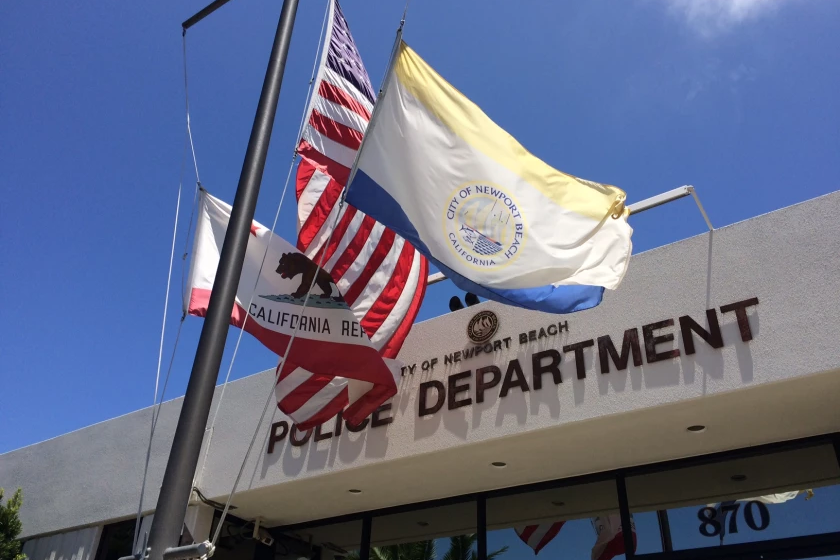The Job Center bottom line
- Share via
S.J. CAHN
Three interesting political stories graced the cover of the Daily
Pilot on Wednesday.
One was on the continuing St. Andrew’s Presbyterian Church
expansion plans, which are now back in the hands of the Newport Beach
Planning Commission. We can only assume that its members couldn’t be
happier that the City Council pitched the controversy back their way
(after the Newport-Mesa Unified School District board of trustees
punted it to the council).
The second story, which was teased from the front, was about
Newport Beach resident Danielle Aimee winning the “Big Break III,” a
Golf Channel reality show. I only saw bits and pieces of the
months-long series, but it certainly seemed like personal politics
was key to maneuvering the way to a win. That was one tough go. Her
prize, for those who missed it, is entry to two LPGA tournaments next
month.
Finally, there was a story about the Costa Mesa City Council
putting off, yet again, the closure of the Job Center. Now the final
date is at the end of the year.
This issue remains heated, and there’s no reason to think it will
cool off any before the end of the year -- the (for now) end of the
line. Those who’ve been following the story know all the hot buttons
being pressed: race, economics, Newport versus Costa Mesa sentiments,
immigration. And we all have our opinion on which is the driving
force of the debate.
There’s one, though -- or maybe part of one -- that we can take
off the table. Closing the Job Center is not going to save the city
any serious money and likely will end up costing Costa Mesa.
That claim of savings is a part of the “economic” argument for
closing the center. More broadly, this argument suggests that getting
rid of the center at this point will help drive Westside
redevelopment -- though what that redevelopment should look like is
an issue that is also tangled mess, with all the same issues of race,
immigration and Newport’s influence on Costa Mesa politics at play.
So in these convoluted webs it’s useful to be able to rule out
parts of the debate. So, again: Closing the Job Center won’t save the
city money.
Before explaining why, I’ll point out who’s said it would.
In a Sunday Q and A feature in the Pilot, Costa Mesa Mayor Allan
Mansoor said: “The Job Center costs us about $100,000 a year to
operate, yet we only place a little over 30 people a day. This
clearly can be absorbed by a private sector business such as Labor
Ready. Why should all Costa Mesa taxpayers fund this when many from
other cities use this service? Employers, not employees, pay the fee
at Labor Ready. As a general rule, government should not do what the
private sector already does.”
When asked: How do you think closing it will help the city?
Mansoor replied: “It will save the city money.”
City Councilman Gary Monahan, who first brought the issue of
closing the center to the council, told the Pilot this: “We’re
looking for other ways to provide work for these folks but just not
through a government-funded, untaxed, underground economy.”
Well, that government funding isn’t very much.
I spoke this week with Mark Taylor, a management analyst in the
recreation department and the one who directly oversees the Job
Center. Here’s how he broke down the cost of the center, which totals
about $105,000 a year.
Rent for the facility is $26,000. Obviously, that money would be
saved, as would the $10,000 in supplies and utility bills per year --
though both figures would have to be adjusted depending on how long
into the fiscal year the center remains open.
But the biggest expense won’t fall to any bottom line. The
part-time workers there are budgeted to cost the city $61,954. But
plans are to reassign them to other city programs.
So figure, at best, we’re talking a savings of $43,000.
Here’s where things get interesting. Police Chief John Hensley has
made it clear that he’ll have to reassign officers to handle the
pockets of day laborers expected to pop up around town. The question
is just how many officers, and what that cost would be.
I asked department spokesman Sgt. Marty Carver if it were possible
to put hard and fast numbers to the redeployment, but unfortunately
he couldn’t do that -- and police officials rightly aren’t given to
expansive speculation.
A look at the budget, though, suggests sworn police officers --
the ones doing the patrolling -- make an average of about $74,000 a
year. That means that if even one officer -- Carver said it would be
officers from special enforcement and the patrol’s bike detail -- has
to be reassigned to manage day laborers, the city essentially loses
$31,000.
I posed that number to Mansoor to see if, in fact, bottom-line
savings really isn’t a key piece of this debate.
His answer, I’d say, swings us back into the more complex parts of
this debate.
“You can calculate it many different ways,” he told me before
emphasizing that a program such as the center “is best done by the
private sector.”
In the short term, he conceded, the city might have to spend some
money on more enforcement. But if the center were moved and put in
private hands, that spending should be brief.
“It won’t be a problem if another location is found,” he said.
On a larger scale, closing the center will help with Westside
revitalization, he stressed -- and we’re back into the larger,
messier debate as well.
Separately, though, Mansoor made two other comments worth
considering. The first regards even the small potential savings once
a private center is opened: “Some of the little things add up to big
government.”
The second, on why the center should be closed, hits on a bit of
political philosophy: “It’s about the main focus of government, which
in my opinion should be public safety and infrastructure.”
With that, you can add difference of political philosophy to the
list of arguments that are driving this debate.
* S.J. CAHN is the managing editor. He may be reached at (714)
966-4607 or by e-mail at s.j.cahn@latimes.com.
All the latest on Orange County from Orange County.
Get our free TimesOC newsletter.
You may occasionally receive promotional content from the Daily Pilot.







